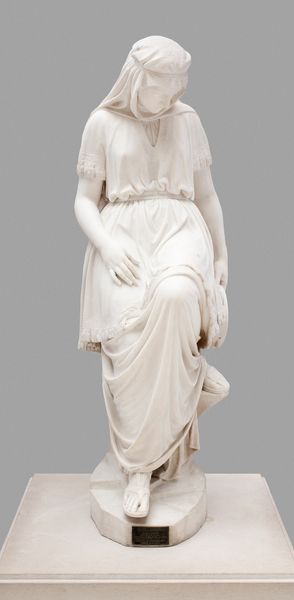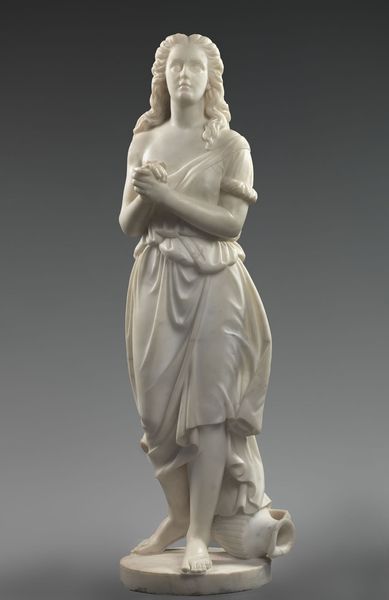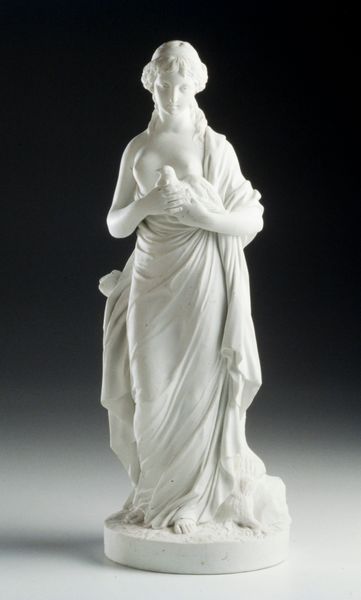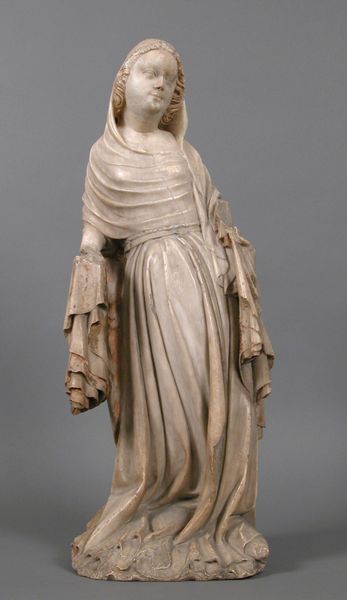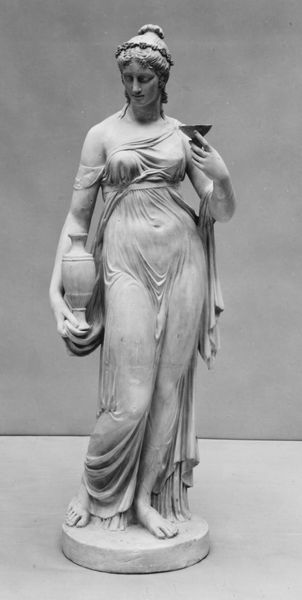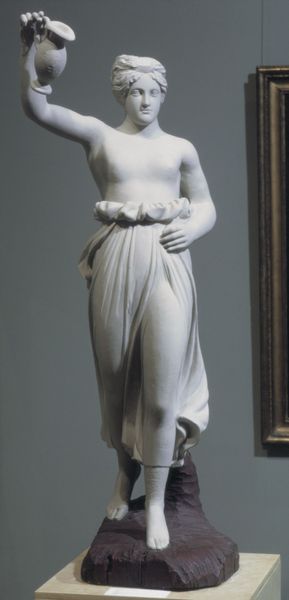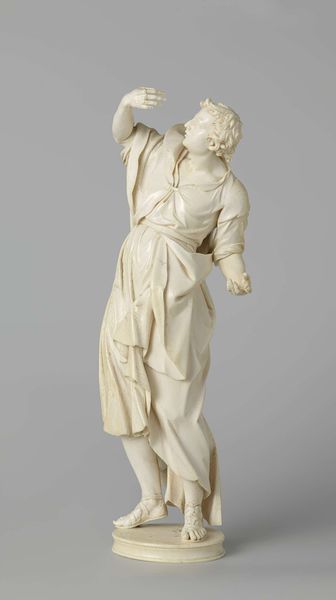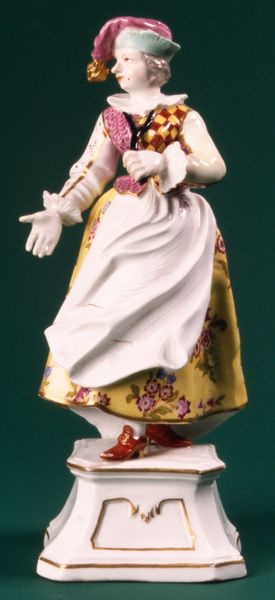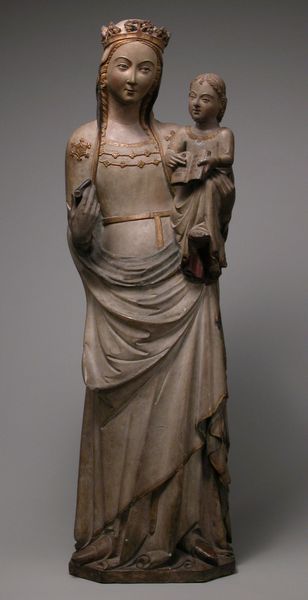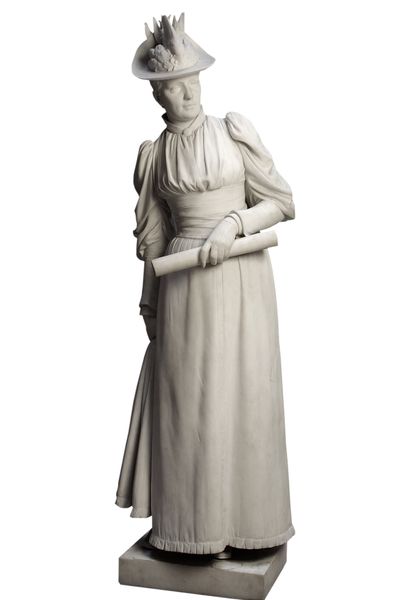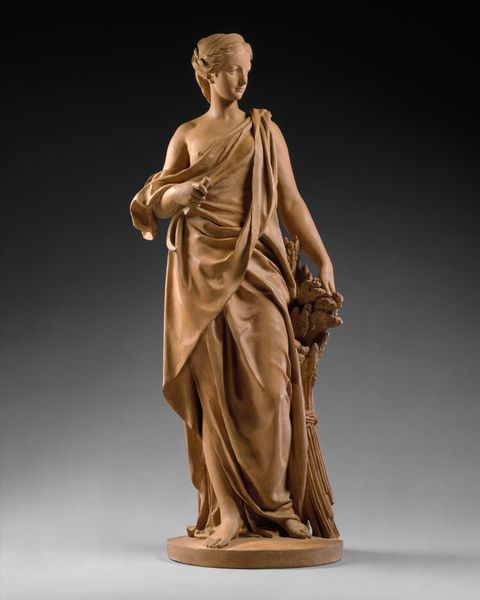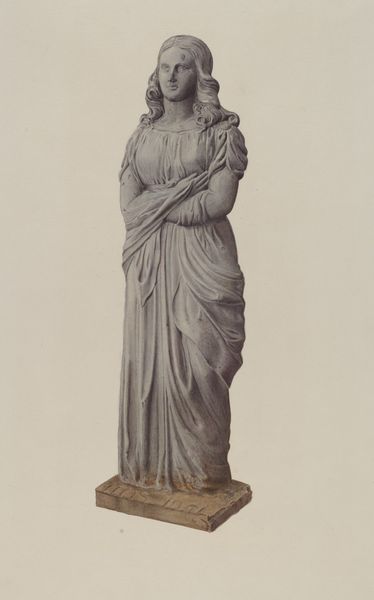
Dimensions: Height: 8 5/8 in. (21.9 cm)
Copyright: Public Domain
Editor: This beautiful sculpture, "Minerva," dates from the 19th or early 20th century and is currently housed in the Metropolitan Museum of Art. Made of ceramic, perhaps porcelain, she has a serene expression. What's your interpretation of this piece, considering its place in history and the Met's collection? Curator: The choice to depict Minerva, the Roman goddess of wisdom and strategic warfare, during this period is fascinating. This was a time of growing nationalistic sentiment in many countries, and the rediscovery, or reimagining, of classical figures served to legitimize contemporary powers. Museums like the Met play a vital role in shaping these narratives, presenting idealized visions of history to a public eager for cultural grounding. Do you think the porcelain material also contributes to this message? Editor: In what way? Is it a status symbol, a commentary... or maybe both? Curator: Precisely. Porcelain was historically a luxury good, often associated with aristocratic taste and international trade. Its delicate beauty conveyed sophistication and power. In a public institution, showcasing Minerva in porcelain sends a subtle message about the cultural aspirations and self-image of the city, and by extension, the nation. Notice how her idealized features and graceful pose are accentuated by the porcelain's smoothness. Editor: So, beyond just depicting a classical figure, the choice of material and its display location both amplify the symbolic message. Curator: Absolutely. It's a carefully constructed image designed for public consumption. Editor: That's a different way to look at it! Now, I'm considering the message of the sculpture itself together with the power and taste of the owner. Curator: Exactly. And thinking about the politics embedded in how and where art is displayed.
Comments
No comments
Be the first to comment and join the conversation on the ultimate creative platform.
